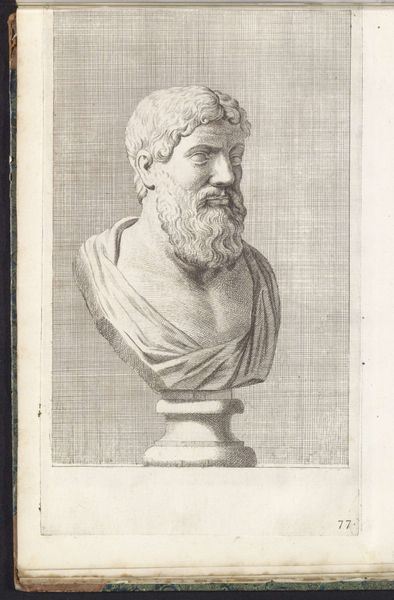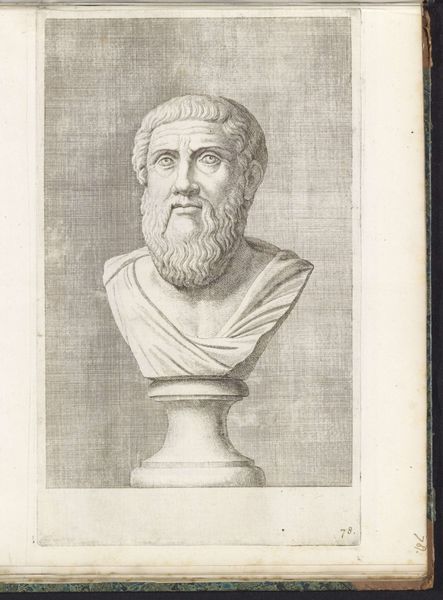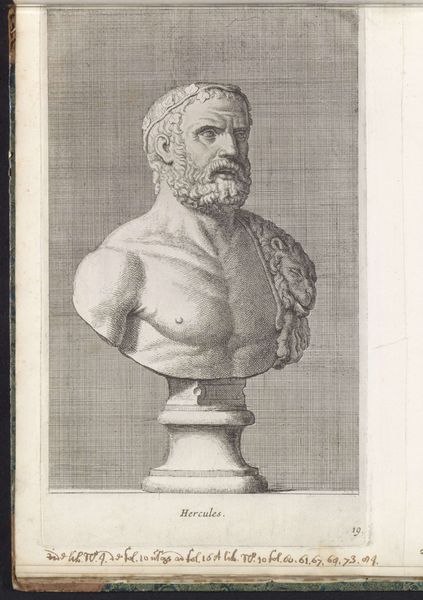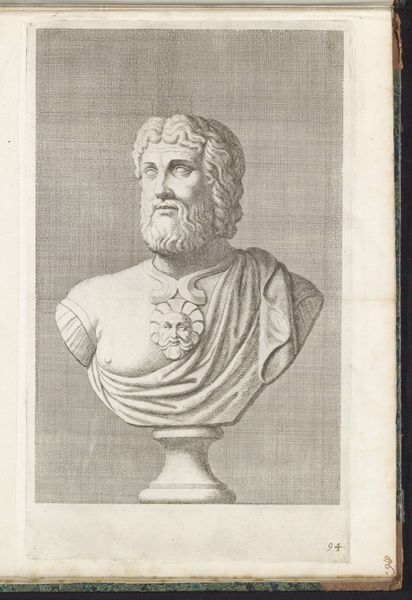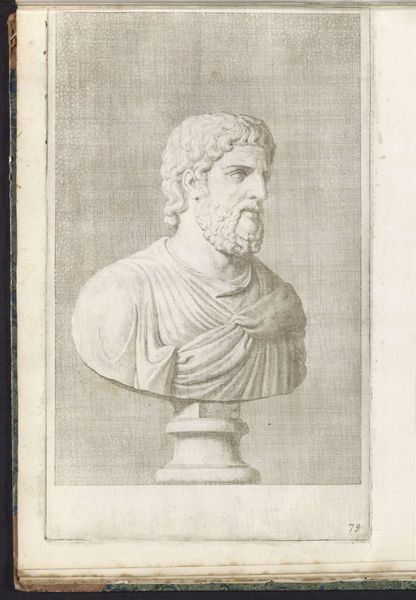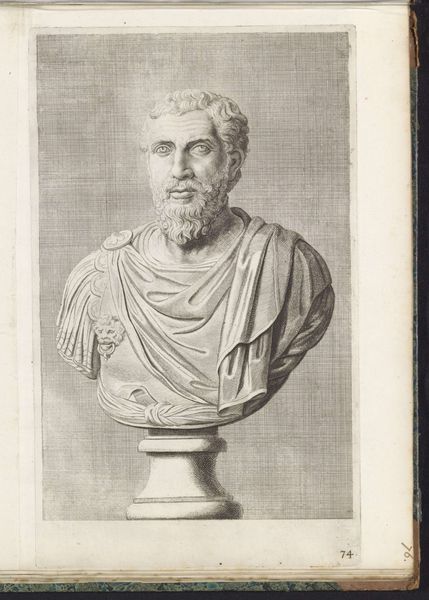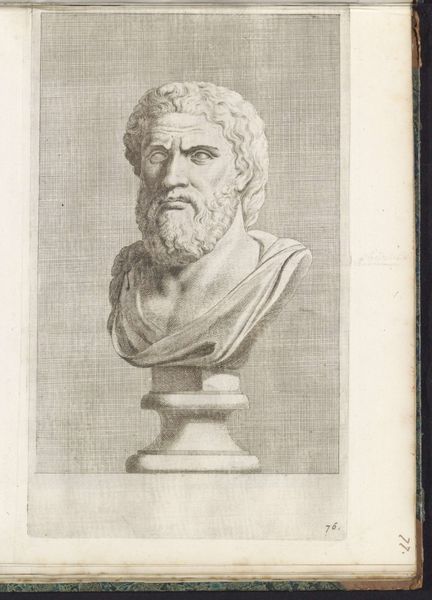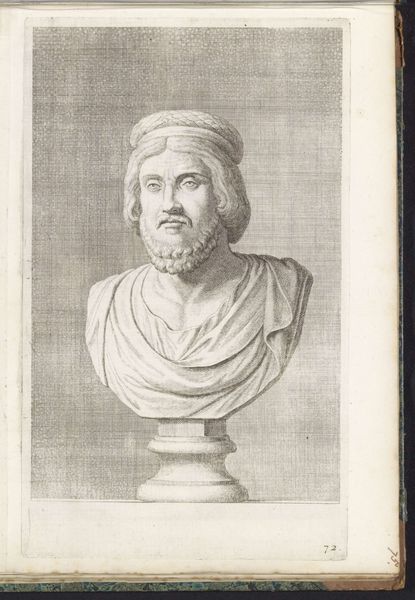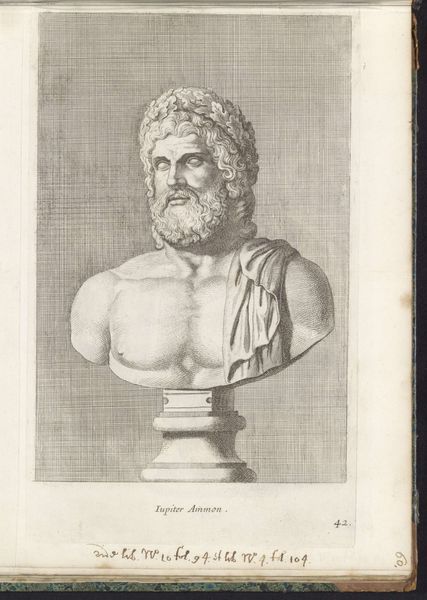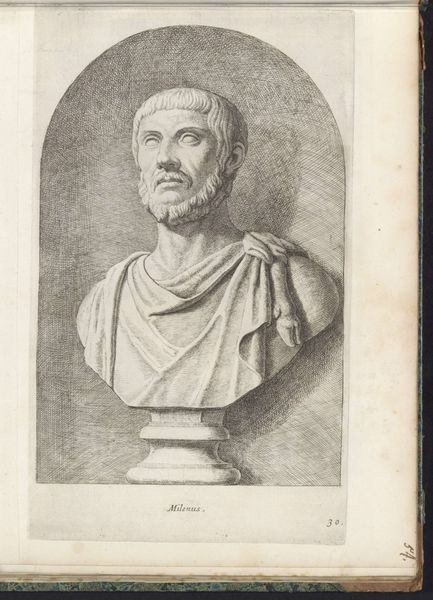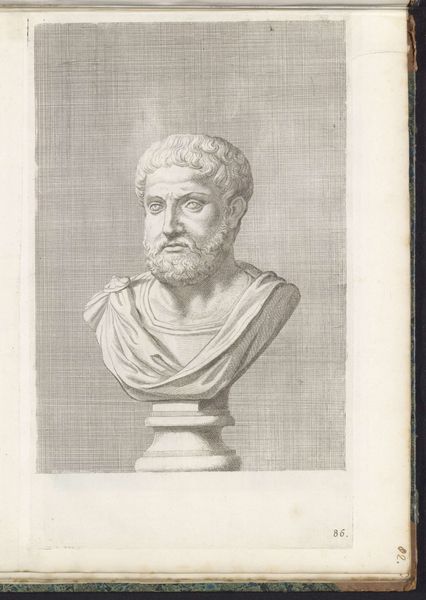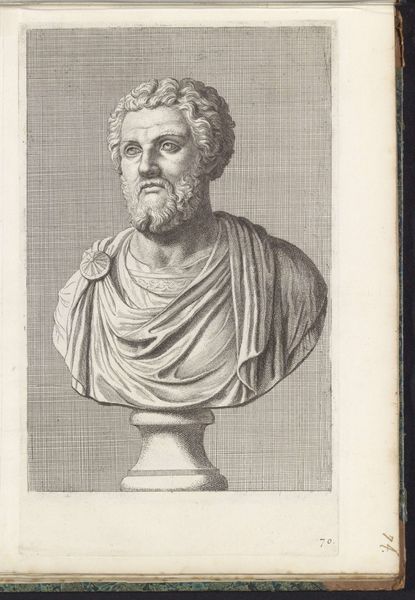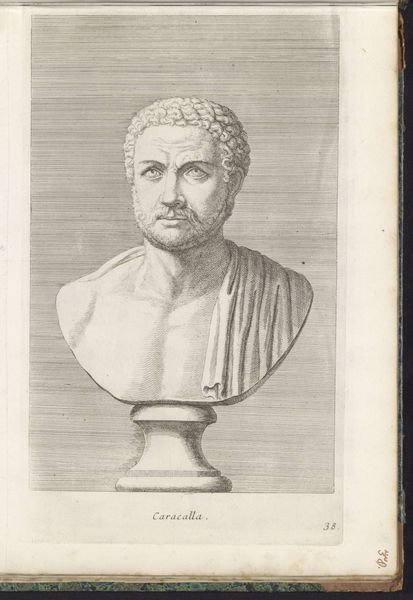
drawing, graphite
#
portrait
#
drawing
#
baroque
#
pencil sketch
#
figuration
#
graphite
#
sketchbook drawing
Dimensions: height 328 mm, width 198 mm
Copyright: Rijks Museum: Open Domain
Editor: Here we have Hubert Quellinus's "Bust of a Bearded Man, Facing Left," created sometime between 1646 and 1670. It’s a drawing rendered in graphite, and what strikes me most is the precision of the lines – it almost looks like an engraving. What catches your eye in this drawing? Curator: The deliberate process behind a drawing like this intrigues me. Consider the cost of graphite at the time, its sourcing, the skill required for its precise application on paper – these were not insignificant factors. The artist wasn’t just representing a man, but engaging in a very specific act of production, dependent on access to materials and expertise. How does the materiality of the graphite itself shape your understanding of the subject? Editor: I hadn’t really considered that. Knowing it's graphite, I guess I see a tension between the desire for realism and the constraints imposed by the medium itself. Did the use of drawing, as opposed to, say, painting or sculpture, influence the social status of this kind of work? Curator: Absolutely. Drawings, in their portability and reproducibility, had a different kind of circulation. Think about the market for such images: Who was buying them, and what did it mean to possess such a portrait executed in a relatively "humble" material compared to an oil painting of the same subject? Also, consider the availability and origin of paper versus canvas or sculpted marble during the 17th century, and where this drawing falls in the hierarchy of luxury and disposability. Editor: That's fascinating. I'm starting to see it less as a straightforward portrait and more as an object reflecting its own production and the society that made it possible. Curator: Exactly! It's about interrogating those very systems. By understanding these pieces in conversation with how their made, they may startle us with new meaning. Editor: Thanks, that really broadens my perspective on seeing this work.
Comments
No comments
Be the first to comment and join the conversation on the ultimate creative platform.
